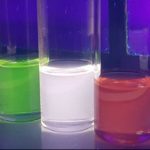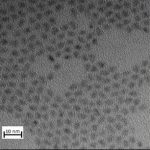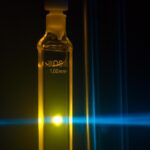- Home
- Research
- Functional Interfaces
- Work-Groups
- Quantum Confined Nanostructures
Quantum Confined Nanostructures
The working group is concerned with semiconductor nanocrystals with at least one dimension below Bohr's exciton radius, e.g. quantum dots and nanorods. Due to their unique electronic and optical properties, which can be varied through the dimensions, they have a wide range of applications, e.g. in sensor technology, as emitters in LEDs or as light-collecting elements in new concepts for photovoltaics or in systems for light-driven redox catalysis, e.g. for hydrogen generation. In particular, the research group is investigating strategies for the molecular functionalization of these nanostructures, e.g. with reaction centers for catalytic conversions, the assembly of the particles and their integration into materials for photoelectrodes. The light-gradient processes underlying the interaction and function are characterized using (time-resolved) spectroscopic methods, e.g. photoluminescence and transient absorption spectroscopy, and structure-dynamics-function relationships are derived, which allow a targeted optimization of the systems.
Selected Research Topics
- Dynamics at nanoscale semiconductor/metal interfaces
- Semiconductor/molecule hybrid structures for water splitting
- Thin films of organized colloidal nanoparticles



